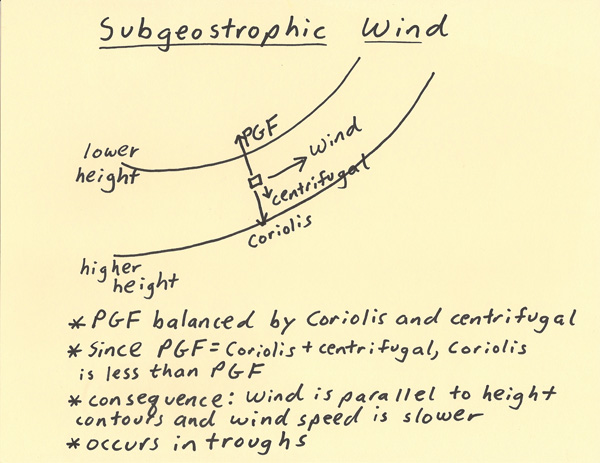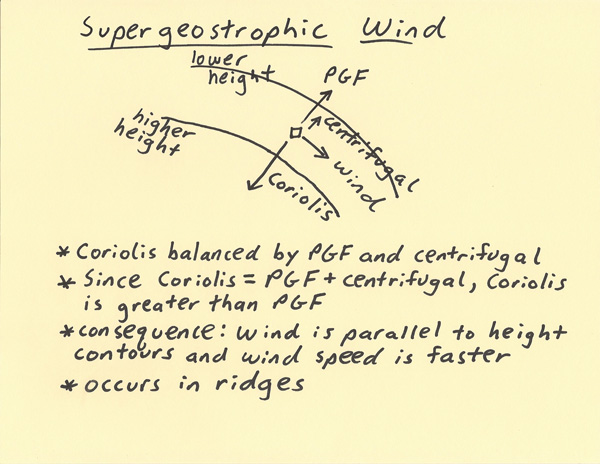
The information in this lesson is an extension of the previous lesson on the “Gradient Wind”. A gradient flow through a trough is termed “subgeostrophic”. The “sub” means the wind speed is less than what would be expected if the wind was geostrophic. In the first example below (“subgeostrophic wind”), the wind is flowing through a trough. In this diagram below (the trough), the outward fleeing centrifugal force is pointing in the same direction as the Coriolis (Northern Hemisphere, Coriolis is to right of path of motion). PGF must balance both centrifugal and Coriolis. For this to happen, the Coriolis needs to shorten so that Coriolis + centrifugal stays equal to the magnitude of the PGF. Since the Coriolis decreases, the wind speed decreases. This allows the wind to stay parallel to the height contours. Without this wind speed reduction the wind would follow a more straight line path that would cause it to move from lower toward higher height contours. Another way to think of this is that the PGF is greater in magnitude than the Coriolis thus the wind is going to bend more in the direction of PGF and this causes the flow to stay parallel to the height contours. A gradient flow through a ridge is termed “supergeostrophic”. The “super” means the wind speed is greater than what would be expected if the wind was geostrophic. In the second diagram below (“supergeostrophic flow”), the outward fleeing centrifugal force is pointing in the same direction as the PGF (Northern Hemisphere, to left of path of motion). In this example the wind is flowing through a ridge. PGF and centrifugal must balance Coriolis (Northern Hemisphere, Coriolis is to right of path of motion). For this to happen, the Coriolis needs to get longer so that Coriolis = centrifugal + PGF. Since the Coriolis increases, the wind speed increases. This allows the wind to stay parallel to the height contours. Without this wind speed increase the wind would follow a more straight line path that would cause it to move from higher toward lower height contours. Another way to think of this is that the Coriolis is greater in magnitude than the PGF thus the wind is going to bend more in the direction of Coriolis and this causes the flow to stay parallel to the height contours. The point of this discussion is that the wind flows slower through troughs and faster through ridges when height contour spacing is the same for each. In reality, the height contour spacing is typically much closer together in a trough. Thus, in reality, wind speed is stronger in troughs since the Pressure Gradient Force is typically much higher in troughs.   |